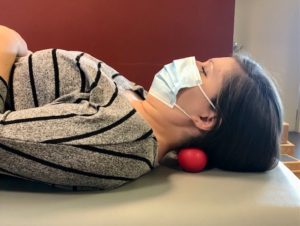
Many of us are affected by intermittent and chronic headaches which can interfere with our productivity and enjoyment of the day. Physical Therapy is the first line of defense for these types of headaches!
The two common types of headaches are tension and cervicogenic, which are a result of muscle imbalance and dysfunction. Tension headaches can affect one or both sides of the head and are a result of muscular tension in the neck and shoulders. Cervicogenic headaches are a result of muscle and joint dysfunction of the upper segments of the neck and refer to pain in one side of the head.
Common causes of tension and cervicogenic headaches include:
- Poor Posture
- Muscle Tension
- Inadequate Sleep
- Emotional Stress
- Physical Stress
There are simple posture and ergonomic corrections as well as exercises and stretches that you can do to reduce symptoms. An evaluation of your desk set up at work to ensure proper ergonomic alignment can be very helpful. For stress relief, it is recommended to invest a few minutes per day focusing on diaphragmatic breathing and meditation. Here are some suggestions of exercises and stretches that you can try to help reduce your symptoms and prevent future headaches. If symptoms continue, it would behoove you to follow up with your physical therapist to get a detailed and individualized program.
Chin Tucks:
While seated with both feet flat on the floor, gently retract your chin in toward the back of your neck as if you’re trying to make a double chin. The goal is to align your ears over your shoulders. You should not feel a strain in the muscles in the front of your neck. This exercise helps to reduce stress from the base of your skull and promotes proper posture alignment.
Perform your chin tuck and hold for 5 seconds, repeat 10 times, 1-2 times a day.
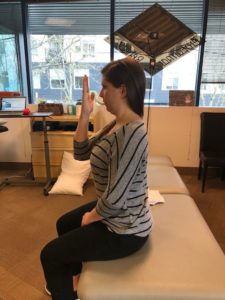
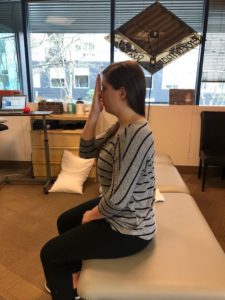
Shoulder Blade Squeezes:
While seated or standing, retract your shoulder blades back and down. You want to feel the muscles between your shoulder blades engage. You may also feel a stretch in the front of your chest. Also, think about the chin tuck mentioned above. Focus on not arching your back during your shoulder blade squeeze.
Perform your shoulder blade squeeze and hold for 5 seconds, repeat 10 times, 1-2x/day.
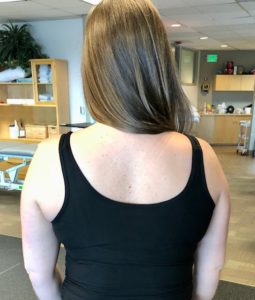
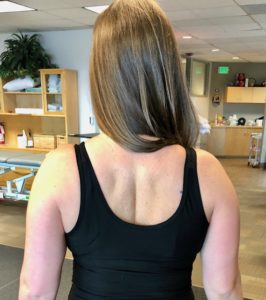
Doorway Pectoral Stretch:
While standing in a doorway, place one forearm against the door frame with your upper arm parallel to the ground. Then lean your body forward and rotate your body away from the arm to feel the stretch in the front of your chest.
Hold for 30 seconds, repeat 2 times on each side, 1-2x/day.

Upper Trapezius and Levator Scapula Stretch with Towel:
While seated or standing, place a towel over your shoulder and pull down firmly. Then lean your head to the opposite side to feel the stretch along the side of your neck. Hold for 30 seconds. Then rotate your head down toward your opposite armpit to feel the stretch along the back of your neck.
Hold for 30 seconds. Repeat on the other side. Complete 1-2x/day.
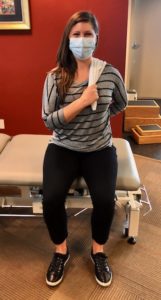
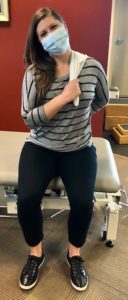
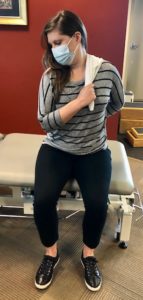
Tennis Ball Suboccipital Release:
While lying on your back, place two tennis balls taped together under the base of your skull (not on the back of your head). Rest in this position for 5 minutes. You can also perform small nods up and down (“yes’s”) and side to side (“no’s”) to provide gentle muscle and joint mobilization.
